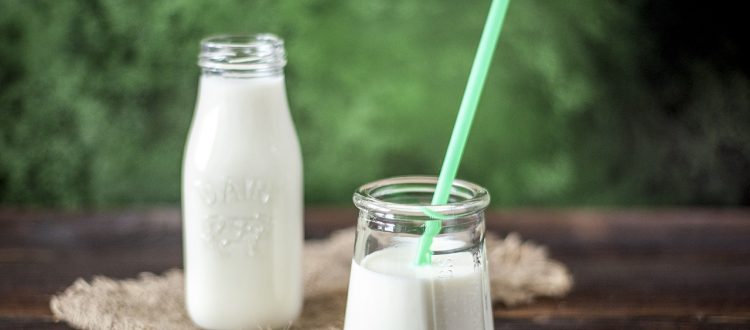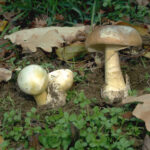
For thousands of years, people have exploited the natural process of fermentation of various foods to preserve them, and to enjoy the changes in flavours, aromas and textures that could be produced.
Recently, fermented foods have been gaining renewed attention and this is being stimulated by reports of perceived health benefits of some fermented foods, by reports of using fermentation of excess food as a way to preserve them and minimise food waste, and as some consumers simply want to experiment with new food sensory experiences at home.
While consumers at home have made foods such as yoghurt and some ethnic foods for a long time, other consumers may be trying fermentation of food for the first time or they may be experimenting.
As with all food handling and preparation though we need to be sure the fermented food produced is safe. Fermentation is a complex biological process and food manufacturers fermenting food carefully control their processing and must comply with the Australian Food Standards Code. Fermented food has a generally good food safety record, but things have and can go wrong.
If you want to try fermenting your own food at home here are some useful tips. This factsheet is not suitable for anyone producing fermented food for sale, who must comply with the Australian Food Standards Code and State and Territory requirements. Nor is this factsheet an endorsement or otherwise of any claims of health benefits of any fermented foods.
If you have chemical allergies or sensitivities or if you have to avoid biogenic amines you need to check with your doctor as to whether the foods you plan to create are safe for you to consume.
Examples of common fermented foods and beverages: yoghurt, cheese, sour cream, salami, soy sauce, sourdough bread, beer, wine, cider, some gherkins and sauerkraut. You may not know that chocolate and coffee beans are wet processed using fermentation.
Examples of less common fermented foods and beverages: Sauces (e.g. fish, Worcestershire, tabasco), tempeh, kimchi, kombucha, mead and kefir.
What is fermentation
Fermentation of food is distinct from preserving food by the direct addition of acids, e.g. vinegar, as when pickling. It involves growing specific edible bacteria, yeasts and fungi in a food which then breakdown food chemicals into simpler forms, including acids, alcohols and various gases such as hydrogen and carbon dioxide.
In order to prevent the growth of undesirable microorganisms that could cause food poisoning or spoilage the good microorganisms must be encouraged to produce acid very quickly This can only happen if the microorganisms added (or the starter culture) are alive and present in sufficient quantities to produce enough acid. They must also have the appropriate nutrients available and the food must be kept at the correct temperature to allow quick growth. In some products, kimchi and sauerkraut, salt is added at the start of fermentation to discourage the growth of undesirable microorganisms.
Microorganisms required for fermentation
Many microorganisms are already present on food; but only some are desirable because they can start the fermentation while others are undesirable as they cause spoilage and food poisoning.
Vegetable foods fermented at home can sometimes rely on the activity of microorganisms naturally present on the raw food, for example, cabbage in sauerkraut. On the other hand, the bacteria used to ferment milk to make yoghurt and cheese or the yeast used in bread making have been purified and are available commercially as purified dried preparations called “starter cultures” either alone or in kits.
Food safety tips
Starter cultures
Whenever possible, use commercial a starter culture from a reliable source and follow the manufacturer’s directions for use.
“Back-slopping” describes when a portion of an already fermented food is added to a new batch to repeat the process. This is a dangerous practice as you do not know what is being repeatedly transferred over time. The starter organisms will naturally change over time changing the end product and contamination with undesirable microorganisms can occur. Any contaminants can ‘swamp’ the desirable microorganisms, reducing their number and slowing acid production. Not only does this reduce product safety, off-flavours may also develop, and the product will not your meet expectations.
When you reply on natural microorganisms on vegetables for fermentation then vegetables should be fresh, clean and not spoiled or decayed. These vegetables will contain additional undesirable spoilage bacteria and pathogens that can interfere with or survive the fermentation.
Quality ingredients
Only use quality ingredients. Fermentation helps preserve food but does not save spoiled and old food.
Purchase vegetables from a reliable source that uses good food safety practices. The vegetables should look fresh and in good condition and be free from excessive blemishes and damage. Wash vegetables if required to remove visible soil and remove any damaged areas. Where the naturally-occurring microorganisms are the starter culture, gently rinse or remove any dirty parts.
Only use pasteurised cow, sheep or goat milk and dairy products or commercial dried milk powder preparations when making fermented dairy foods. Raw milk can contain food poisoning bacteria that may survive the fermentation.
Fermented meats should never be made at home. Producing these products safely requires more control than can be provided in the home. They should only be made in licenced premises complying with the Food Standards regulations.
Hygiene and cleanliness
Some food poisoning bacteria, e.g. Listeria and E. coli, can survive the fermentation process. It is therefore important to follow our hygiene messages for personal food handler hygiene and general food preparation hygiene (LINK). Wash all preparation surfaces and utensils, fermentation jars and equipment in dishwashers or with hot soapy water and rinse well.
Follow the recipe
Use a reliable tested recipe and the correct amounts of ingredients e.g. salt, sugar etc. that will ensure sufficient and rapid fermentation. Measure ingredients with weighing scales or measuring cups and jugs. The correct balance of ingredients is critical to produce safe fermented foods.
Use the recommended temperatures and holding times in trusted recipes during fermentation and storage to control the growth of microorganisms and the fermentation process. Kits and fermenters, e.g. yoghurt makers, are designed to produce a safe product, with the required acidity if used exactly according to instructions.
Use pickling salt and not iodised salt according to recipes to have the correct amounts of salt present.
Be sure ingredients are covered with liquid if required. You can force vegetables down by using a sanitised plastic sheet which has been weighted with a rigid container of water. Do not use ceramic containers which might contain lead, garbage bags or bins etc. to carry out the fermentation process.
Glass and food grade plastics that are not cracked or damaged are recommended and not metal, other than stainless steel, as it may react with the acidic products. Washed, new metal stainless steel buckets can be used and reused.
The container and any lids etc. used for the fermented product can be sanitised with boiling water for 60 seconds. You can follow the instructions on a sanitiser for baby bottles or add 1½ teaspoons of bleach to 5 litres of water and soak the item for 10 minutes for plastic containers. Afterwards rinse well with tap water to remove the sanitiser. Alternatively, you can stand the containers, with their lids loosely screwed on, in a boiling water bath and heat them until the temperature inside the centre of the jar reaches at least 85 deg C. Once the temperature has been reached, screw the lids on tightly and allow to cool on the bench.
Final storage
Follow recipe directions for storage of individual products. Fermented foods do not last indefinitely. Some fungi and yeasts can grow in acidic foods and also, in doing so, can reduce the level of acid produced during fermentation. This can make the product unsafe. So label and date the products you have produced.
Follow the food safety tips clean, separate, chill and good personal hygiene when preparing and serving the fermented foods.
Find out more about kombucha



